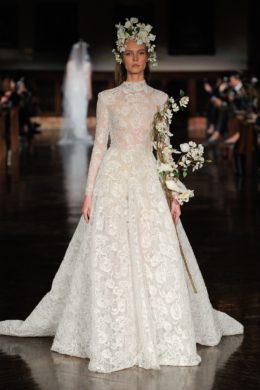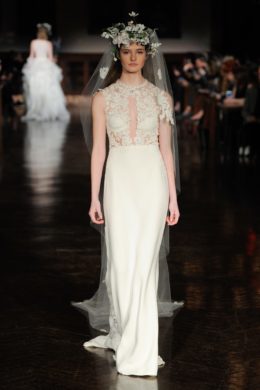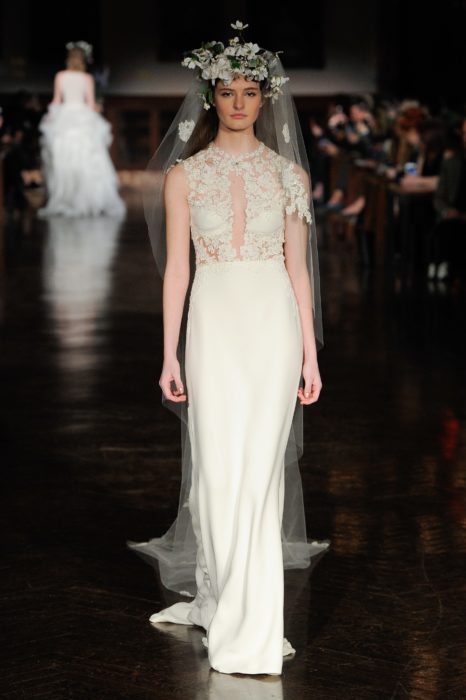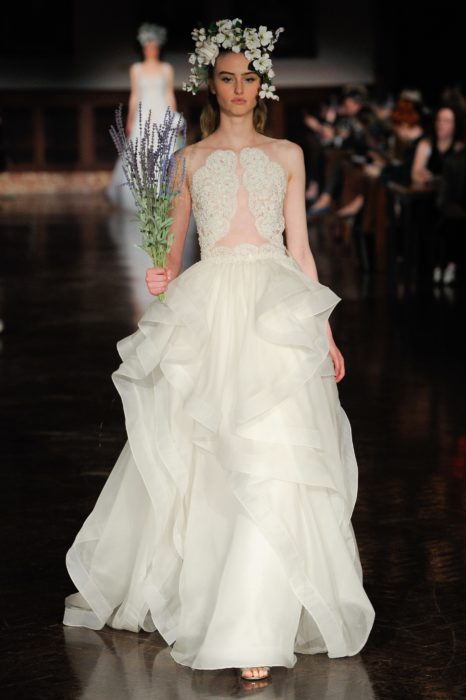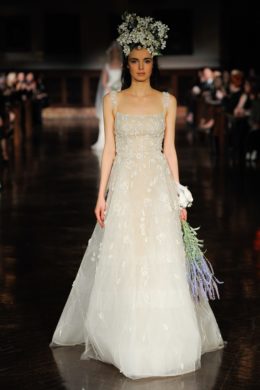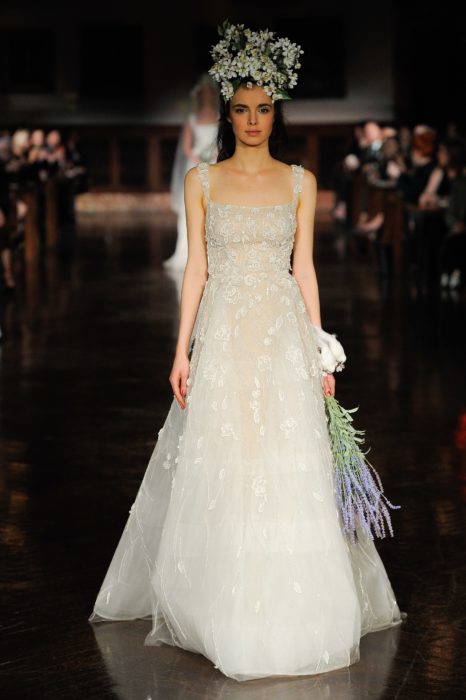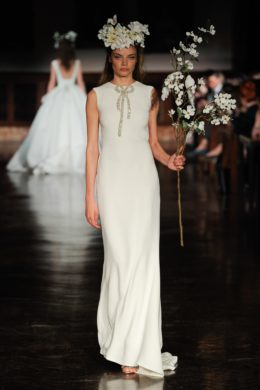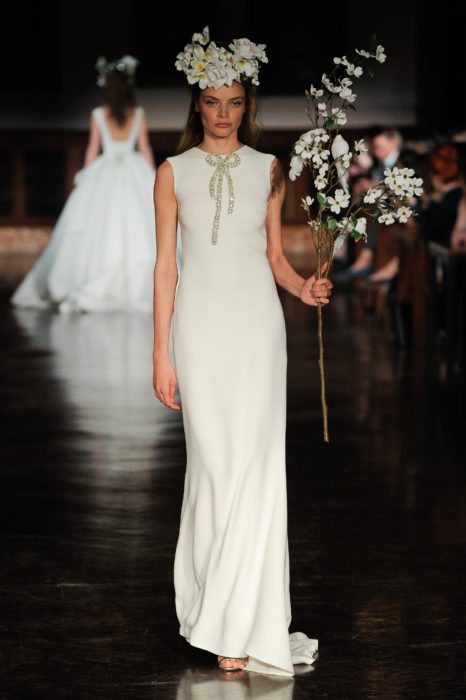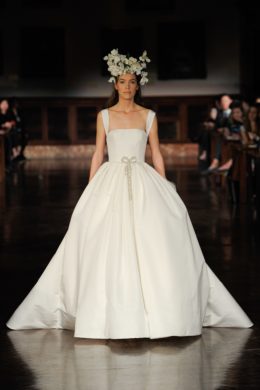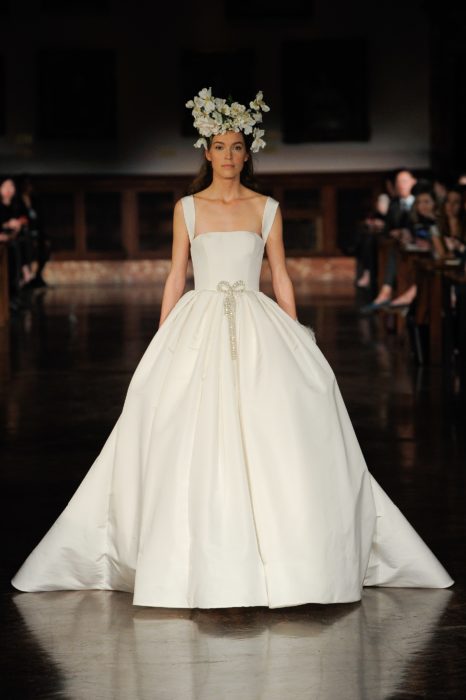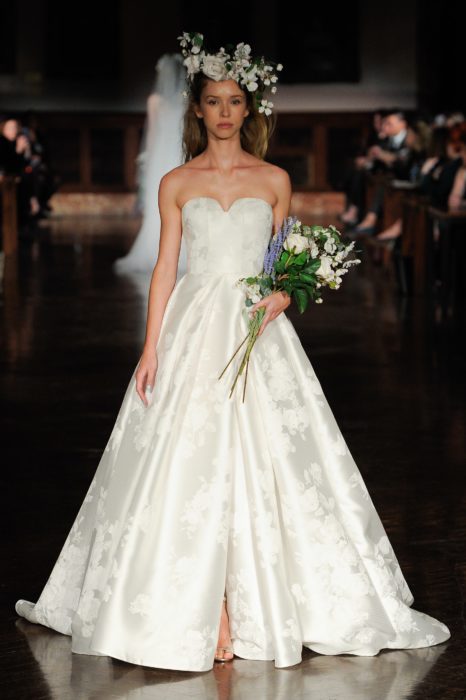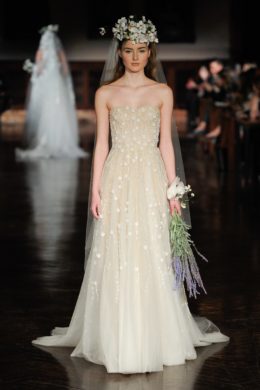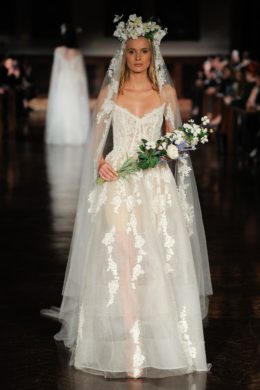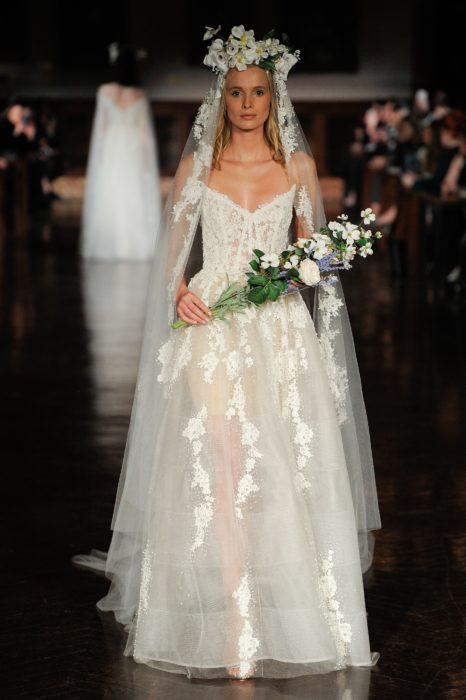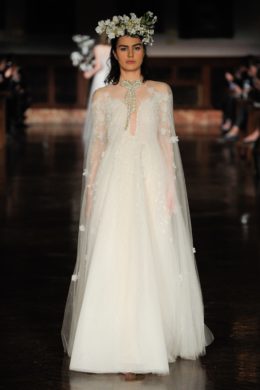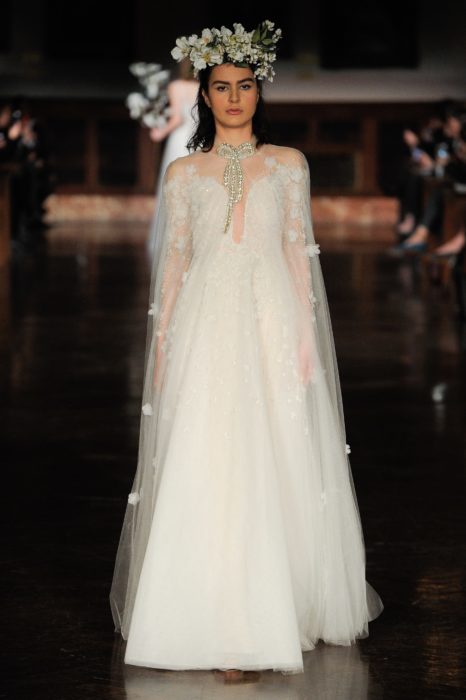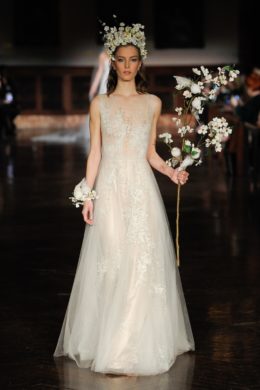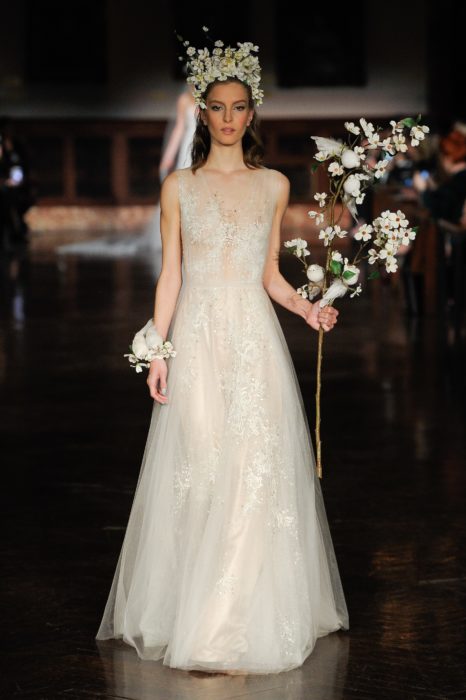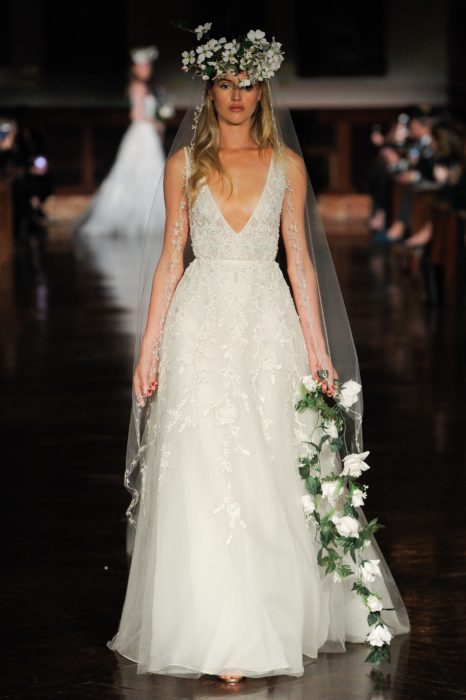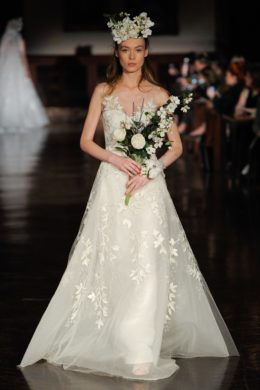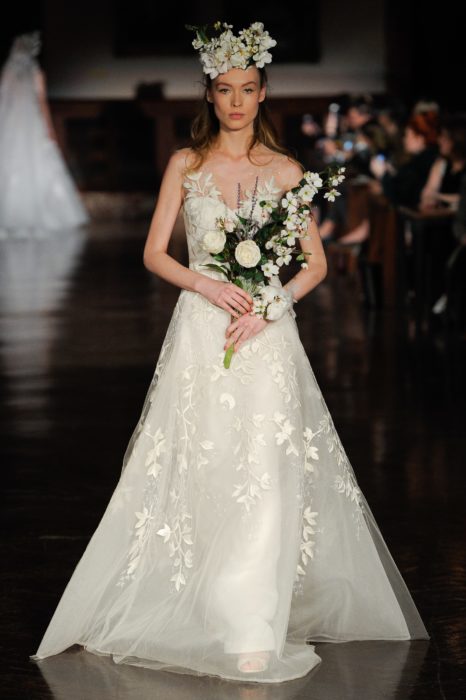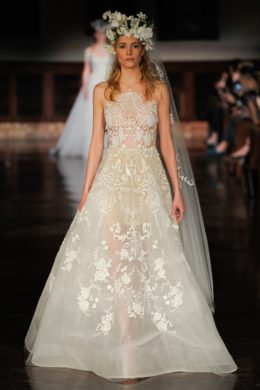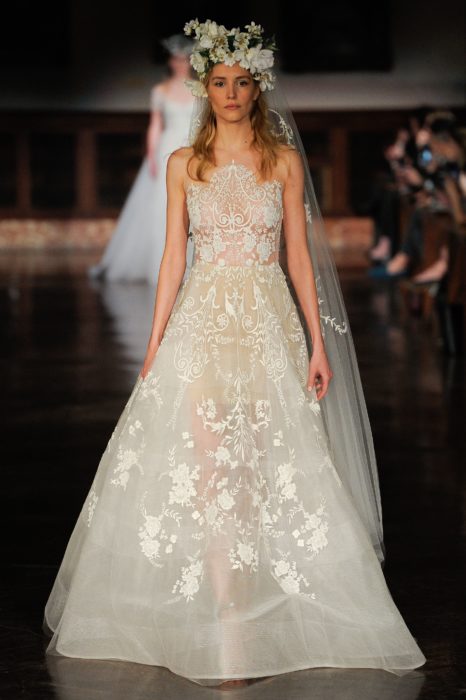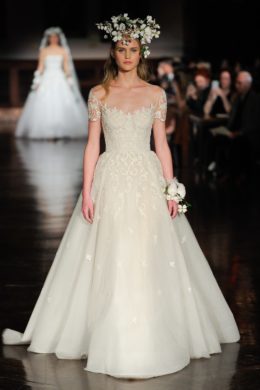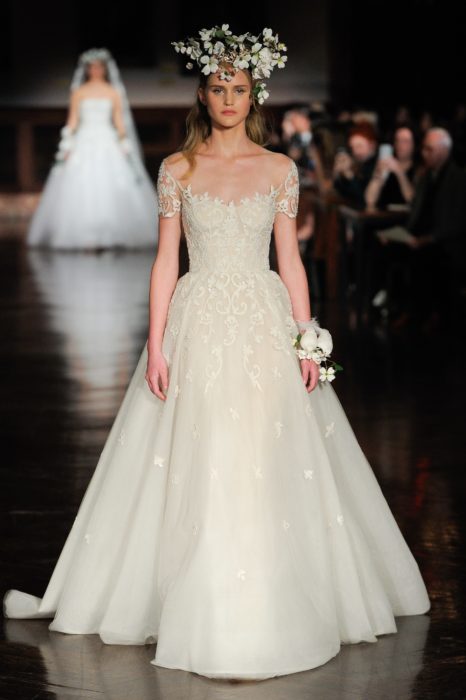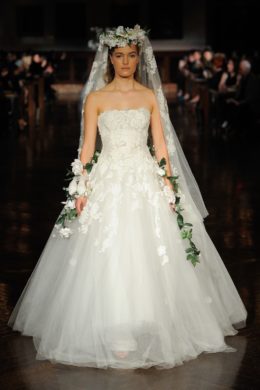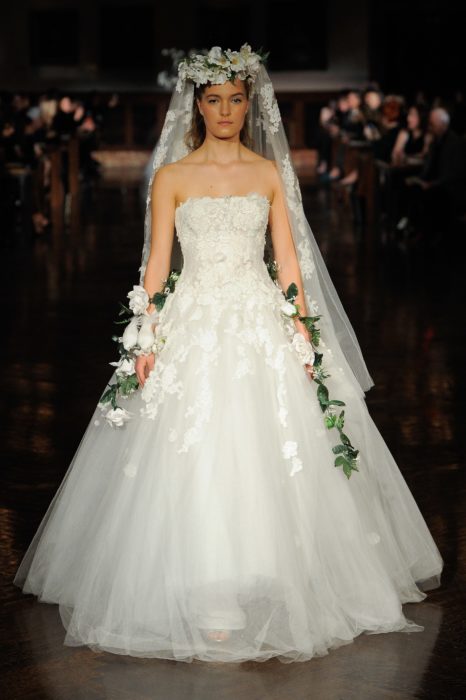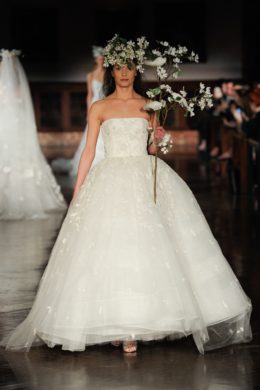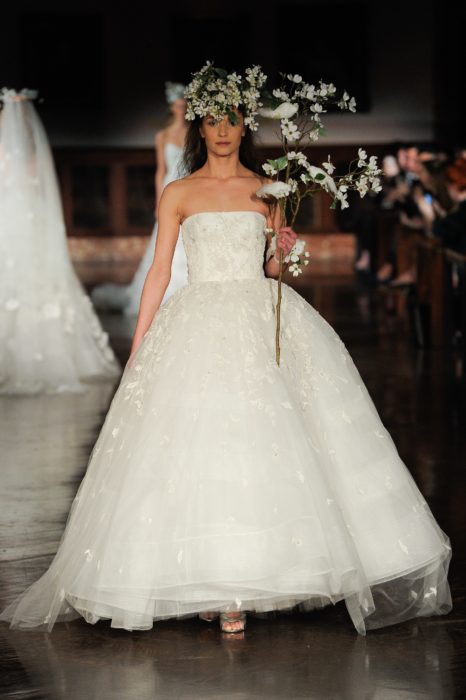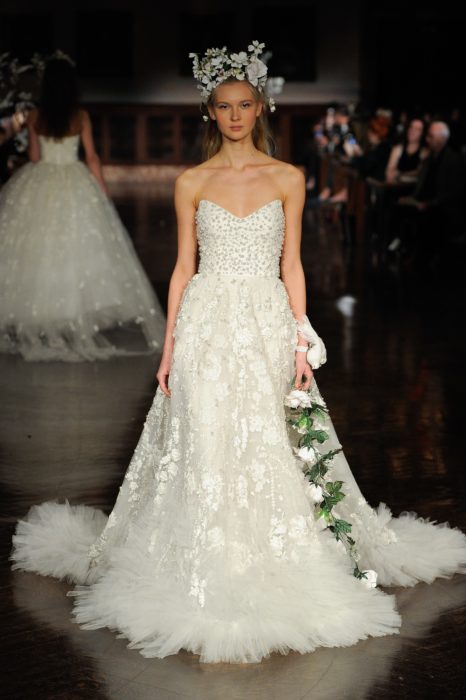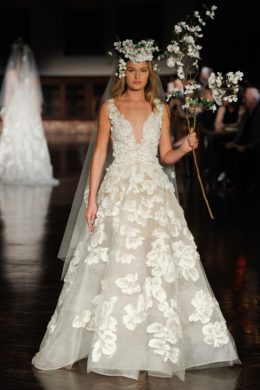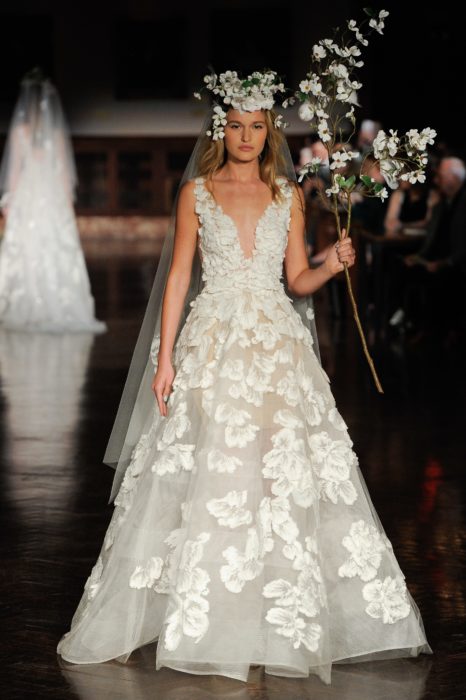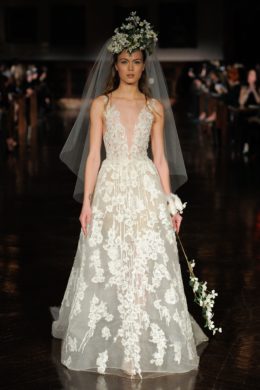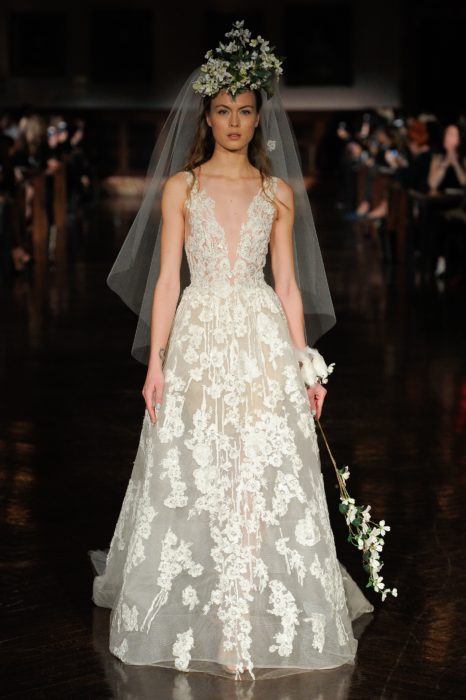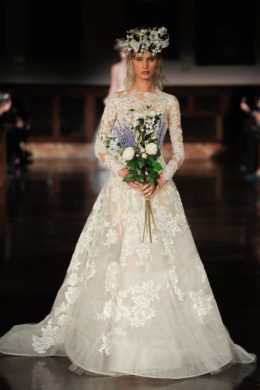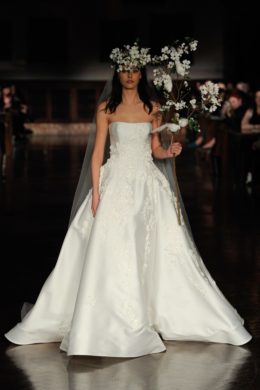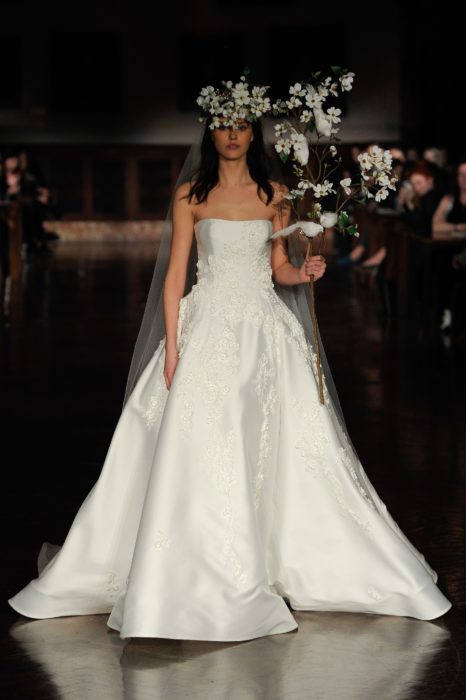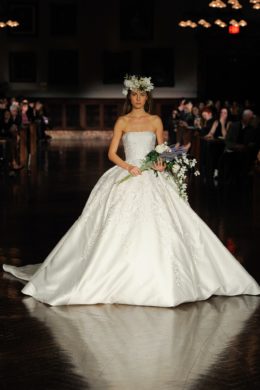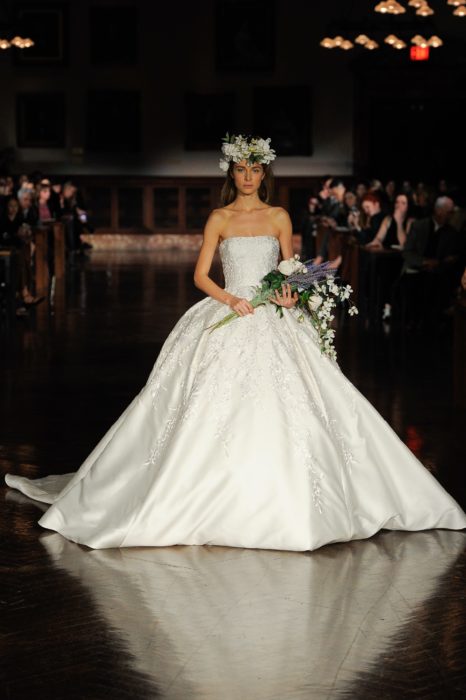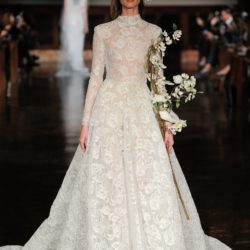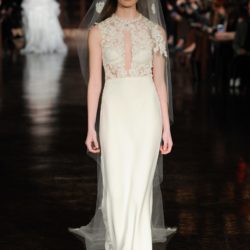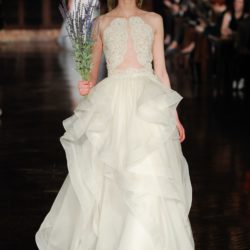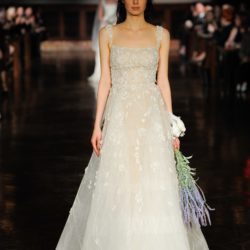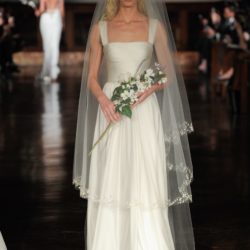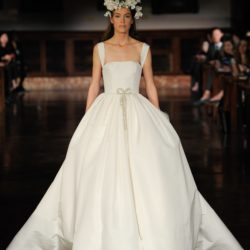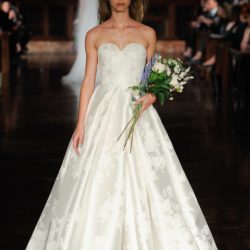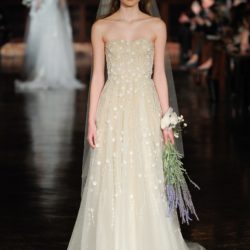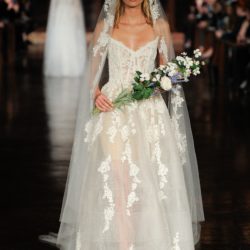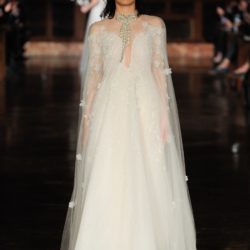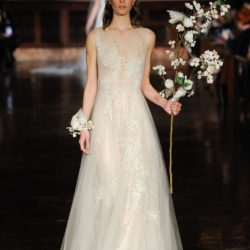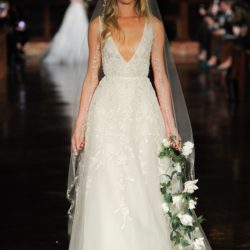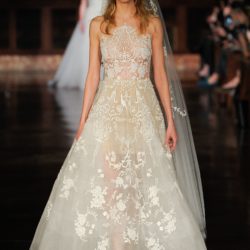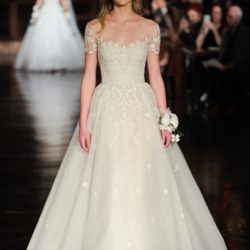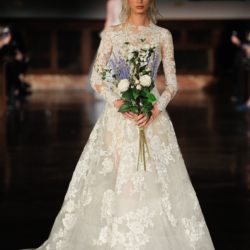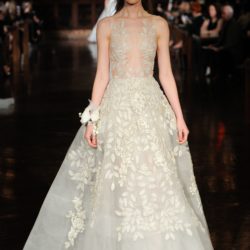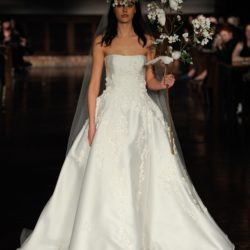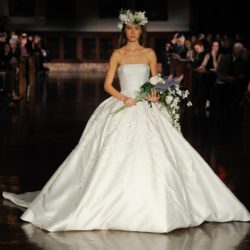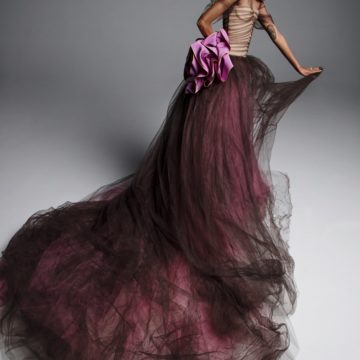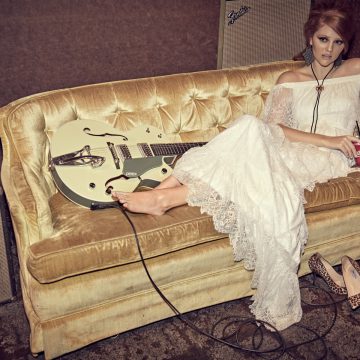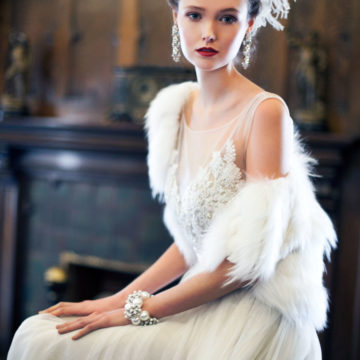Inside the Edna Barnes Salomon Room at the New York Public Library, I took my seat at a wooden table, its surface soft from the books, resting palms, and quiet fingertips that had touched it before me. Like most people who wander into this historic building, I didn’t come here for a book, but there was one placed in front of me and every other editor and buyer attendance: “The Prophet,” by Kahlil Gibran. The dimly lit room grew darker, photographers took their positions, and a syncopated voice, reciting prose from the classic collection of essays, boomed overhead. Regal ballgowns appeared as though out of a dream, elegantly sheathed on models with gravity-defying floral crowns fastened to their heads. Instead of bouquets, some carried floral branches that wrapped up and around their arms; it was impossible to separate flower from woman. Similarly, the dresses felt like natural extensions of the models wearing them, but they also seemed to be suspended in air, as if floating on the bodies, cloud-like. They were definitely sexier than Reem Acra is known for. The collection was a fantastical play between the classic ballgowns of times past and the more daring numbers brides are flocking to today. Like the act of devouring a book in the library, the designer’s vision was at both grounded and ecstatic—and entirely transporting.
Publisher's Best
Explore local vendors we love.
 Bridal & Formalwear
Bridal & Formalwear
Bella Bridesmaids
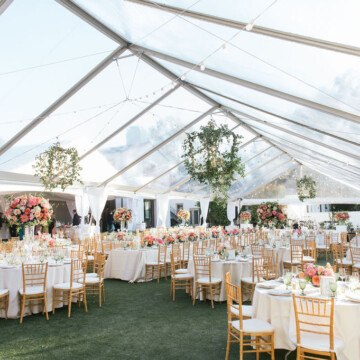 Wedding Venues
Wedding Venues
Dallas Arboretum and Botanical Garden
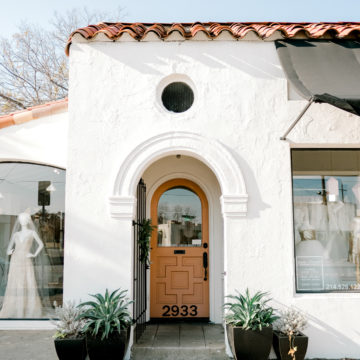 Bridal & Formalwear
Bridal & Formalwear
Patsy’s, A Bridal Boutique
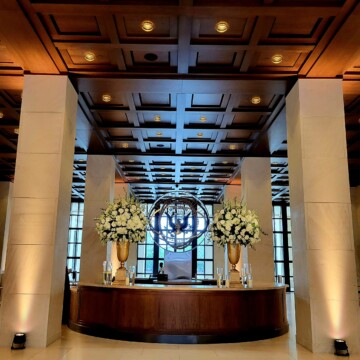 Rehearsal Dinner Venues
Rehearsal Dinner Venues
George W. Bush Presidential Center
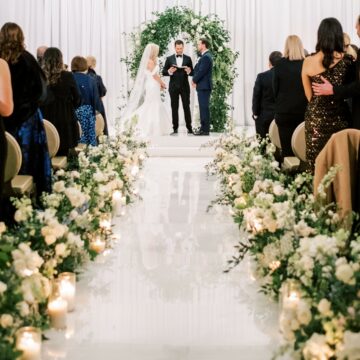 Rehearsal Dinner Venues
Rehearsal Dinner Venues
The Adolphus
 Rehearsal Dinner Venues
Rehearsal Dinner Venues
Warwick Melrose Dallas
 Decor & Rentals
Decor & Rentals
Rent My Wedding
Sponsored
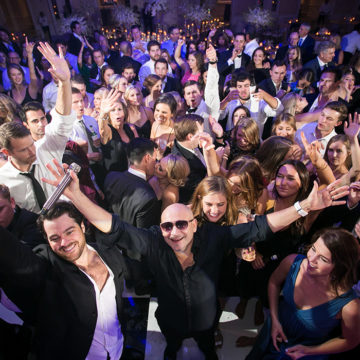 Entertainment
Entertainment
Emerald City Band
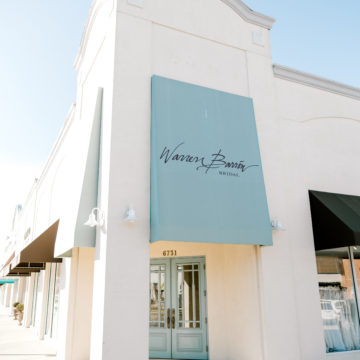 Bridal & Formalwear
Bridal & Formalwear
Warren Barrón
 Wedding Venues
Wedding Venues
Rosewood Mansion on Turtle Creek
 Wedding Cakes & Pastries
Wedding Cakes & Pastries
Fancy Cakes by Lauren
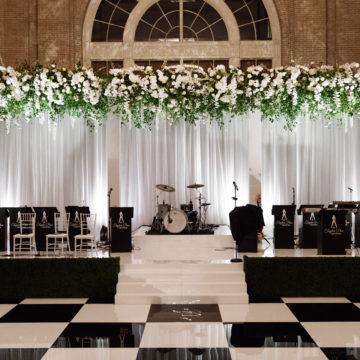 Decor & Rentals
Decor & Rentals
Branching Out Events
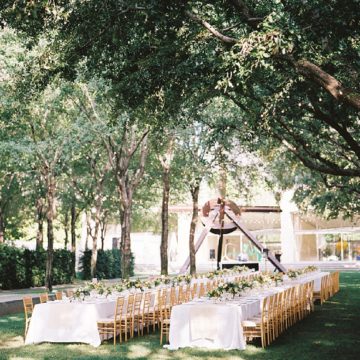 Wedding Venues
Wedding Venues
Nasher Sculpture Center
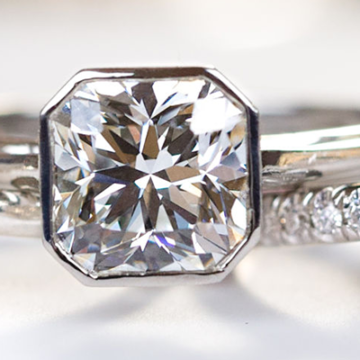 Engagement Rings & Fine Jewelry
Engagement Rings & Fine Jewelry
Bachendorf’s
 Catering
Catering
